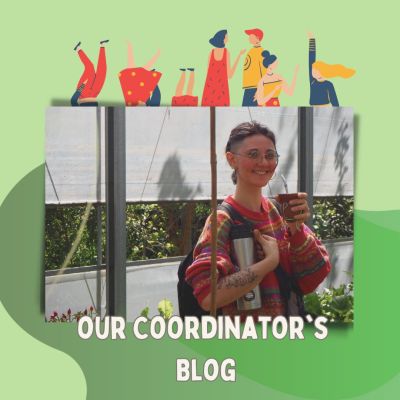It's time for us to head to Caminito. Without a doubt this is the most walked and visited street of la Boca, basically for its colorful houses, the ongoing tango dancing couples and of course, the parrillas. A common misconception about the painted houses is that they were designed as a street art museum but it wasn’t quite like that, It was actually Benito Quinquella Martín (the neighborhood’s artist and hero) the one who decided to cover the conventillos with colors in order to give people a positive ambience amidst the poor and unfair social conditions.
This painter from a humble background, who started painting at an early age, decided to portray the port and its workers during their work days. He saw in art the opportunity of freedom of expression and dedicated his whole life to depict la Boca’s social reality, paying an homage to its people and the neighborhood’s true essence. While chatting about this important Argentinian, The guide showed us different murals and paintings that still remain in Caminito and that capture your attention due to Quinquella’s characteristic touch of painting with a spatula instead of a paintbrush, since he believed he should paint with the tools of the workers.
After listening to Nicolás talk about the inspiration behind the art and colors of Caminito, we kept walking beyond the invisible “limits” that people often recommend not crossing. For him it's actually the opposite, he tells us that you don’t really get to know what la Boca is until you get far enough from the touristy streets.
It’s late afternoon, just before sunset and everything feels so peaceful. We walk through a little plaza and nico asks us to sit and listen to what he has to say about the more political and active side of the neighborhood.
With the conventillos about to explode and the massive overpopulation in the streets close to Caminito, problems started to arise. The majority were linked to economic issues: locals felt the money they were receiving wasn’t enough and the lack of regular work and lifestyle conditions were the main reasons that led these porteños to start creating unions and political movements in order to unite as a community with the intention of getting help from the government.
It can be said that the first group of feminism was born in la Boca when a group of working women with the names of Juana Rouco, Digna Collazo and Virginia Bolten decided to create the Anarchist Feminine Centre in order to fight for women's rights. Politics seemed to influence the majority of its people, for example: the bakers. In Argentina a lot of the bakers were immigrants belonging to the anarchist movement who famously named their pastries with anarchist terms in order to make fun at religious, political and police authoritative figures.
Hence Nicolás decided that after hearing this, the perfect idea would be to visit a local bakery to see for ourselves the different facturas from which we could choose: bola de fraile (friar balls) suspiro de monja (nun’s whisper) vigilante (vigilant) and many others. While we exited the bakery with our goodies, the night was settling in enchanting the streets of this beautiful neighborhood that should be considered as a prime example of the Argentinian culture.






